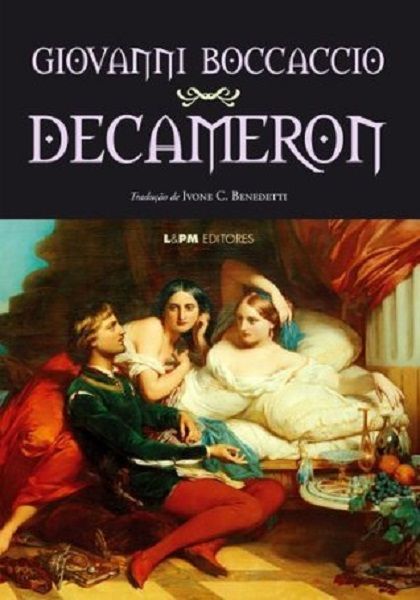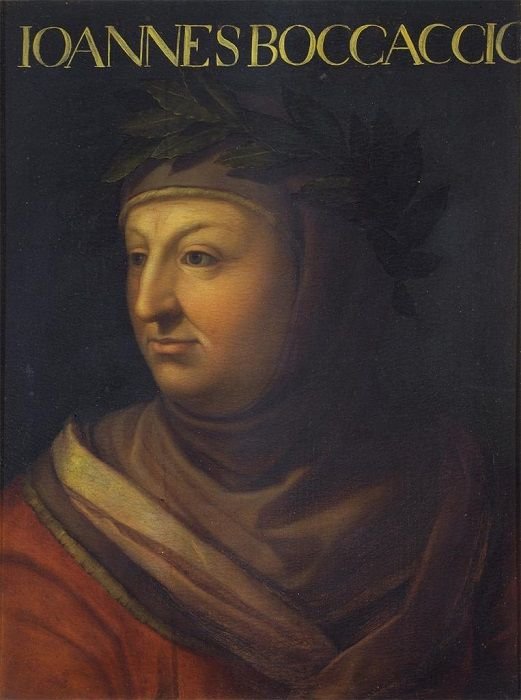The Renaissance man depicted in Boccaccio's "Decameron"

We can rightly declare that Decameron is the first work in European prose at the border between the Middle Ages and the Renaissance, in which artistically and persuasively formulated a fundamentally different concept of the human personality previously existing. In his most famous work, the 100-decade novel "Decameron," Boccaccio affirms a new concept of man as a combination of good and evil, exalted feelings and sinful acts, earthly and vibrant, capable of being at the same time master of his fate and a toy in its hands. Man is equally susceptible to temptations in life, and to the limitations of morality or religion. Boccaccio focuses primarily on the diversity of the feelings of the human soul-filling and the bad, the unpredictability of the various situations - happy or unhappy, in which one can fall and respond to them in a different way.
The concept of man, in line with the Renaissance humanist ideas, is pushed and deployed in Decameron in two mutually exclusive and seemingly mutually exclusive directions. One of them, supported by more than half of the novels in the collection, suggests that one is not the master of his destiny, but a toy in the hands of the capricious Enlightenment. Something that reminds us, for example, of man's dependence on gods in ancient tragedies. The other line in building the overall concept of man is based on the thought that, in spite of circumstances, one is the creator of his life, and with his actions and preferences he determines his own destiny and the moments of happiness he feels. This polarization of Boccaccio 's suggestions to the reader is neither accidental nor inexplicable if we recall the real situation of man in the Early Renaissance era. He is increasingly relieved of the bonds of medieval thinking and the absurd constraints on his vitality. This gives him reason to feel strong, invincible and self-confident as never before. At the same time, however, the Renaissance man intuitively feels that the fall of the old inhibitions and the breaking of the spirit, but also of the morals, threatens the occurrence of chaos, anarchy and moral degradation. There is still some measure, some force - and what is more acceptable to think of the power of exalted spirituality to stop man if he does not realize in time that freedom, among other things, also means responsibility! For every past limit of human irresponsibility, the Decameron heroes have a reciprocal retribution that is already entrusted to the hands of Almighty Destiny.

The Renaissance concept of man as a master and creator of good and bad in his life is a particularly acceptable prospect of a strong personality. Everyone strives for more happiness, love, opportunity for self-expression, and that is nothing wrong. On the contrary, in many of the 100 novels, the overwhelming obstacles and obstacles to lovers are ultimately overwhelming, precisely because characters fanatically believe in their strengths, minds, tricks and talents. It does not stop them, even death, sometimes crossing their life path fatally, but powerless to kill their love. Against the backdrop of a plague that has been transformed by a plague into a massive tomb, Florence Boccaccio builds, figuratively speaking, a building of 100 optimistic and even joyous novels in which the all-embracing love takes place. His characters define their destiny by themselves, struggling with unauthorized and unauthorized means for their happiness, led by the thought that love is stronger than people, and especially by their hypocritical efforts to hide it.
The person in "Decameron", seen in the light of new humanistic ideas, acts boldly, vigorously and cleverly to bring events to a favorable end. He is the creator of fate, trying to play with him often, only when he is not afraid of its counteraction, but manifests miracles of courage, courage, wits, generosity and self-confidence. Boccaccio affirms the right of his characters to happiness, encourages their desire to prove themselves and defend their honor and pride. This is completely in line with his concept of a person who can not only, but must rely on himself if he wants to be happy and respected. The new Renaissance man, according to Boccaccio , is bound to be clever, to cultivate itself, because, according to the author, there is no greater, more unpardonable sin of stupidity if it is not congenital, but the product of ignorance. It always stands on the side of these characters who show mind, wits and insights built on the basis of knowledge and experience. In the new era, the attitude towards the church changes completely, and this is also evident in Boccaccio's novel. Renaissance culture is anthropocentric. The belief in God remains strong, but the attitude towards the church changes. Church rituals are declared to be self-directed. The Bocca's words ridicule priests and monks as people who do not serve God, but only themselves. The same is true of novels, where church officials are always exposed. In the novels for the Massage and the Nuns, for those about the monks, Roustico and Alberto, it is clear that Church officials are no different from ordinary people. They also seek to satisfy their love at the cost of everything. Revenge is one of the signs of the Renaissance man. It is common in the tales of the seven ladies and the three young men. The past era has been a tool used by the gods while the man is now serving it. People serve revenge when they are hurt or bitten. For them, it is just another opportunity to create. In the Middle Ages, laughter was the embodiment of the devil. In Decameron, it's the way to shake your worries and enjoy life. The ten narrators cling to laughter and joy as the only chance to save themselves from the terrifying reality surrounding them. Decameron is one of the eternal books of literature. It is one of the first novels of the Renaissance. He scandalized the society to the point where the author himself gave up his work. But the work will remain an inexhaustible source of the domestic and spiritual problems that excite the new, Renaissance man.
Your posts continue to be impressive. I would be curious to read your take on Pasolini’s Decameron, as a cinematographic masterpiece in its own right as well as in comparison/contrast with Boccaccio’s.
No pressure there ;-)
You open a very interesting topic. I will think about that, but maybe I will think something about Pasolini's " "Medea". :)
Thanks for share a beautiful literature. I will read Decameron @ godflesh
Really impresive. Im learning a lot of strategies from you. Thank you. Im a follower.